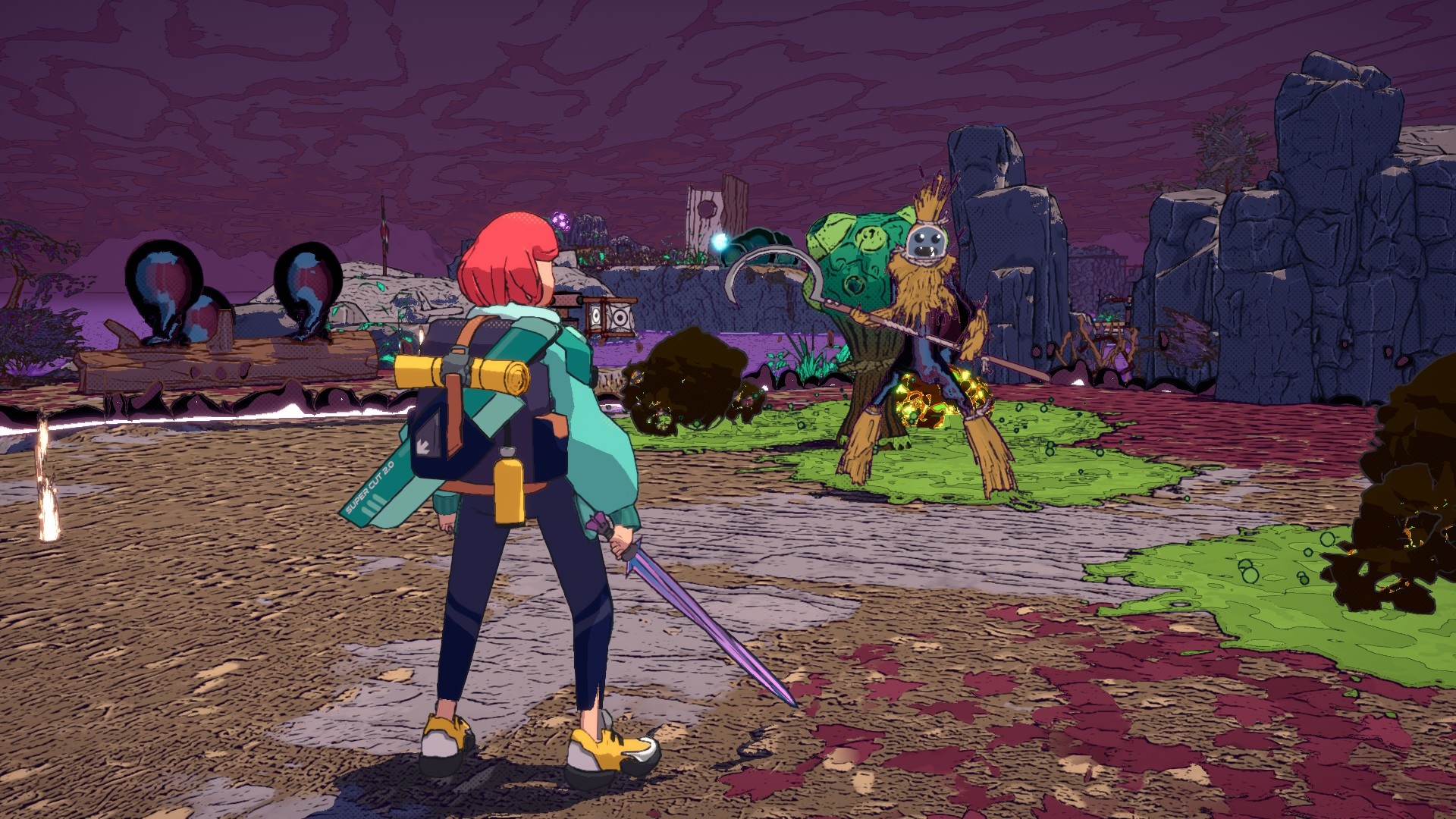
A cozy vacation to solve burnout from work. That's relatable for many of us. Slaying goopy monsters and solving magical puzzles? Well, that's a bit out of the ordinary.
That's the main thrust for Dungeons of Hinterberg, an action-RPG that asks questions like "what if magic was real and it made small towns the hottest vacation spots around?" while juggling a dizzying number of gameplay elements from other genres like puzzle games, social sims, and more.
A few small issues and some bugs aside, Dungeons of Hinterberg is a solid action-RPG. At its core though is some fantastic, sharp writing that asks interesting questions of its player and protagonist, all wrapped up in a cozy setting. Here's my review of Dungeons of Hinterberg.
What is Dungeons of Hinterberg?
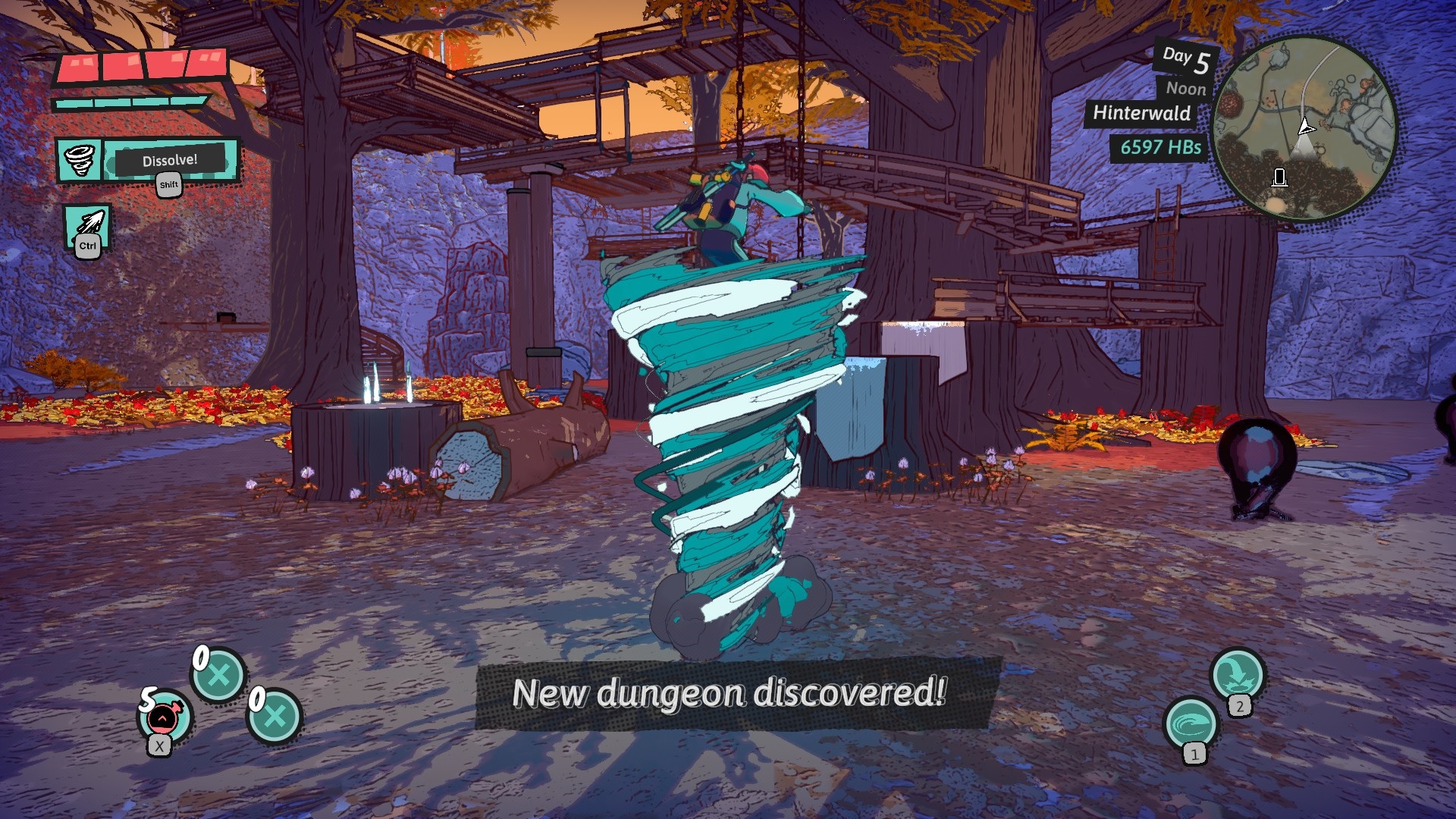
Price: $30 at Xbox
Developer: Microbird Games
Publisher: Curve Games
Genre: Third-person action role-playing, social sim
Install size: 7.58GB
Playtime: ~18-20 hours
Release date: July 18, 2024
Platforms: Xbox Series X|S, Windows PC
Xbox Game Pass: Yes
Reviewed on: Windows PC
Dungeons of Hinterberg is a third-person action-RPG with puzzles and social sim gameplay elements. Developed by Microbird Games and published by Curve Games, Dungeons of Hinterberg places players in the shows of Luisa, a burnt-out lawyer who takes a vacation to the titular Alpine village of Hinterberg, one of a few places on the planet where magic has suddenly appeared, with goopy monsters pouring out of mysterious dungeons.
Dungeons of Hinterberg tasks players with completing dungeons, acquiring new gear, and exploring the surrounding locale. The gameplay loop is built around your day being divided into Morning, Noon, Afternoon, and Evening. Morning consists of some conversations to get your quests started, Noon has you explore a chosen region, Afternoon has you either rest for the day or try to complete a dungeon, and the Evening is where it's time to prep for the next day, as well as finding time for social activities like making friends.
Dungeons of Hinterberg: Story and characters
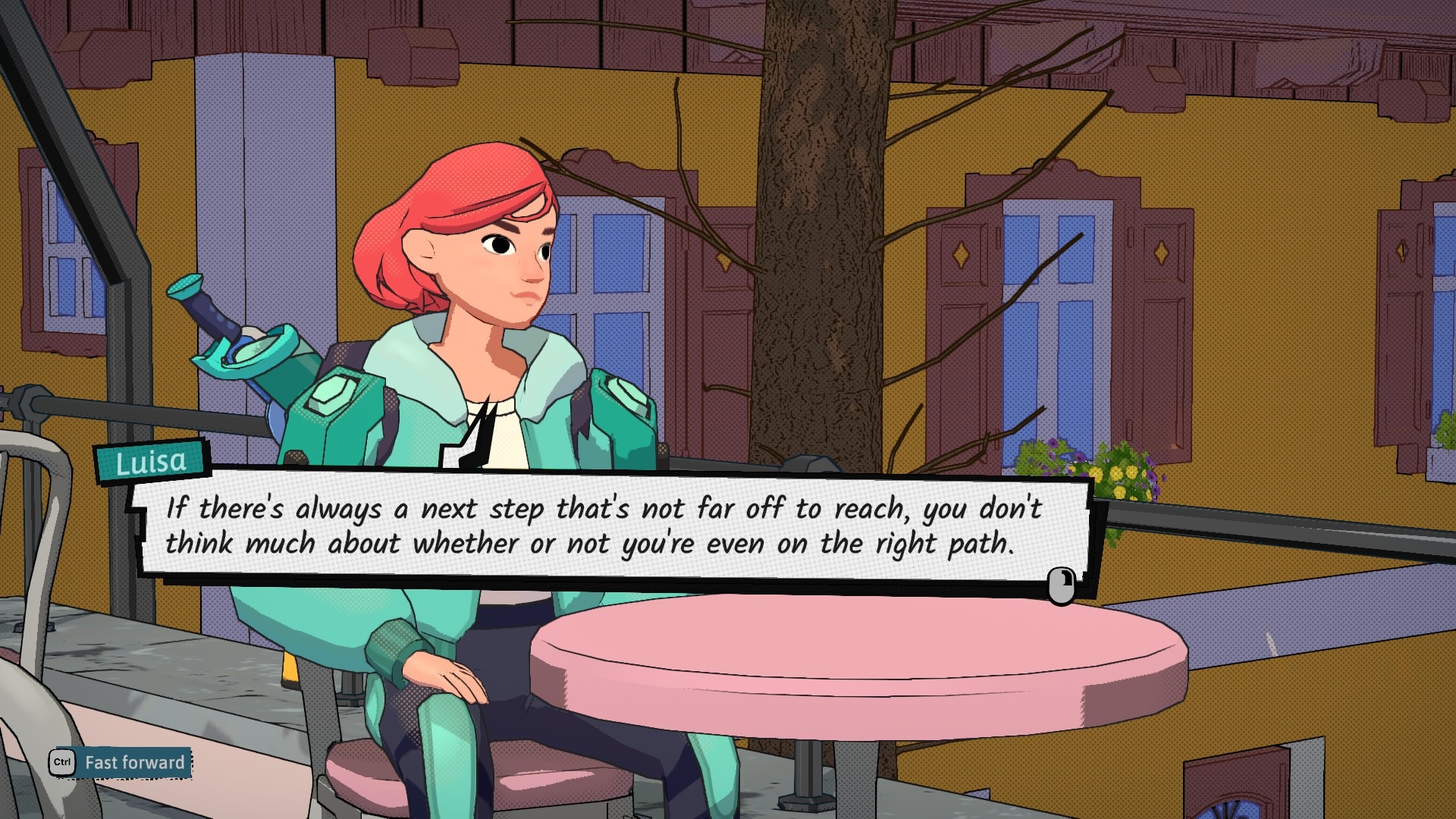
Dungeons of Hinterberg's core is based around protagonist Luisa, a lawyer who feels like she's stuck in the mud, burning out in her everyday job. Naturally, she leaps at the opportunity to experience magic, not knowing what it will bring except that some sort of change is sorely needed.
It's a relatable feeling, even if us in the real world can't solve our work woes by slinging spells and slaughtering muck-born creatures. It would be easy to for the writing to stumble here, but I found myself drawn to everything Luisa would have to say, and there's something to be said for the comfort of seeing your own stresses and worries related through a medium like games.
Luisa is solving her own issues, but she naturally gets drawn into the troubles around her, trying to provide feedback for others and even getting drawn into a strange mystery surrounding the town. You've got some options for exactly how you engage with others, but her personality is ultimately define, something that usually felt natural.
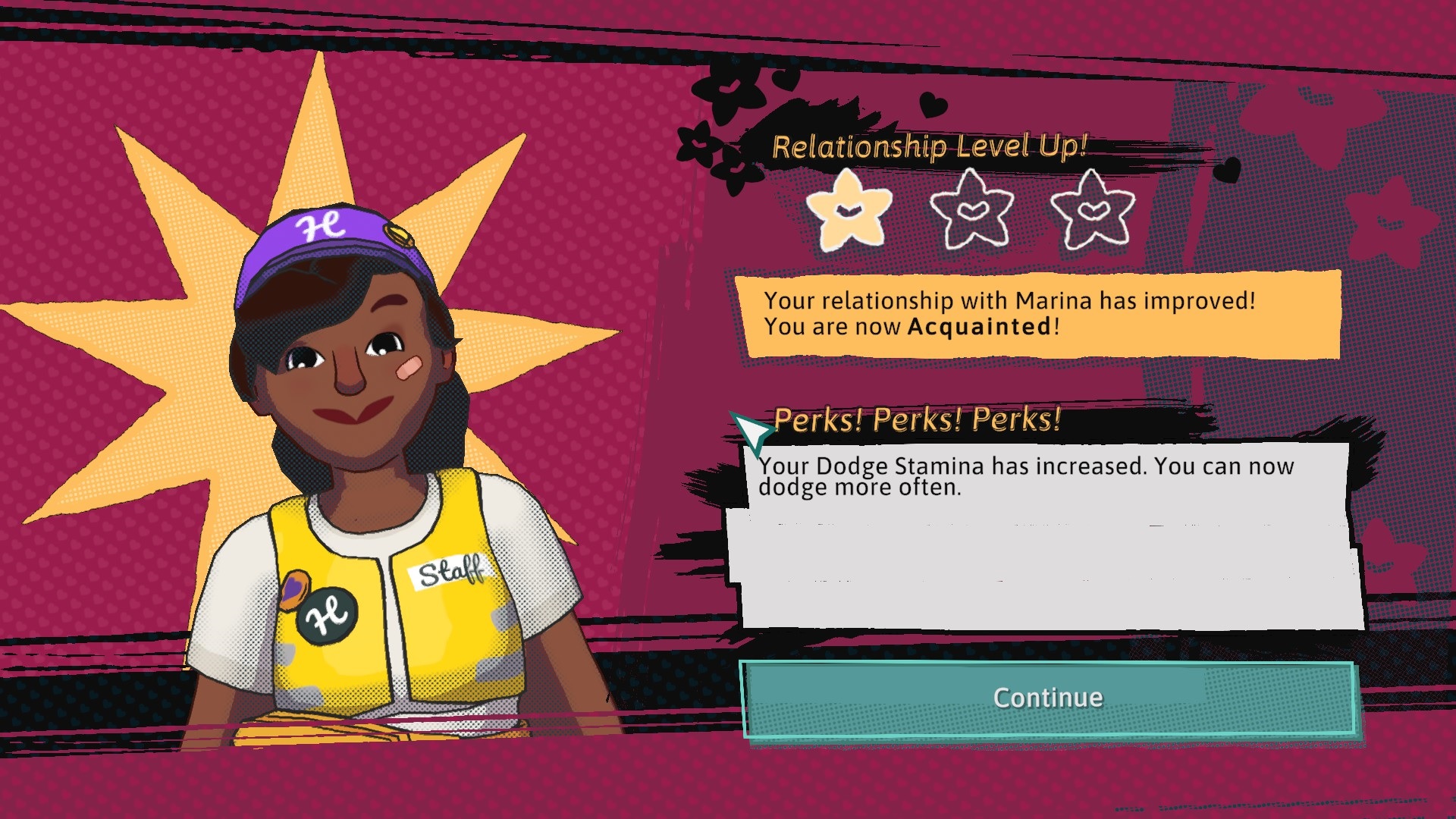
All of that expands through the social systems that make up a significant chunk of Dungeons of Hinterberg. While you can be a total introvert and just go to movies by yourself or stay up reading (she's just like me) but you're encouraged (and at a handful of points, essentially required) to strike up conversations with the residents of Hinterberg. Tourists, professionals, artisans, and scientists abound around you; every resident or passerby has something unique to offer.
As your relationships improve with different characters, you'll get different bonuses. Talking to pro slayers can unlock special new moves, while helping a local save her business might result in some serious discounts and special upgrades for your gear. It's a neat system that had me changing my plans on a fairly regular basis, and your progress is tracked in a notebook so it's easy to see your current standing with everyone.
The one issue I ran into with this system is how it's required for a handful of points in the main story, with a small number of dungeons seemingly arbitrarily locked behind some characters' quest. I understand that the idea here is to get the player to engage with the gameplay system and not shrink away — and to be fair, the game does a good job subtly encouraging you to talk with as many people as possible early on — but it can still be annoying to see that a dungeon is locked behind a quest and that you have no idea which quest it is or who you need to talk to.
Dungeons of Hinterberg: Gameplay and features
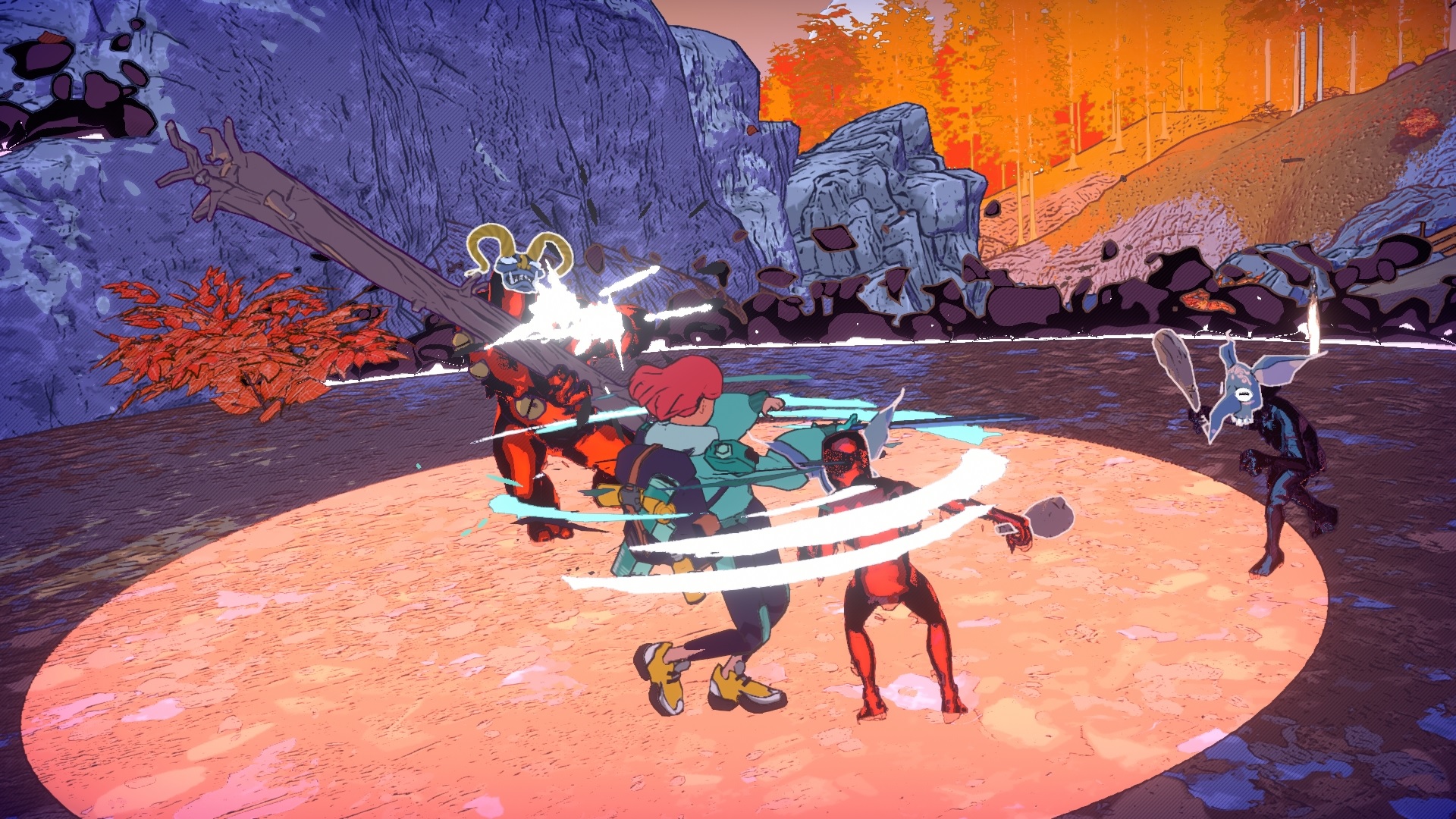
As mentioned above, the gameplay loop in Dungeons of Hinterberg is based around having a daily routine, with different times of day for accomplishing different tasks. Every day, you'll pick one of four main regions to explore. Each region has been affected differently by the magic in the area, which means you'll have different abilities depending on where you're exploring. These include having wind blasts, a tornado, electrical pulses, the ability to rail glide, and many more.
These regions and the dungeons within them are populated by a variety of strange monsters, muddy creatures that take on the form of folk creatures or deities, including Kobolds, Gnomes, Perchta and many, many more. Each foe presents a different challenge, and you'll be killing thousands of them in arena-based combat as you make your way through the game. Luisa has access to her regional magic and trusty swords, but you can also unlock further upgrades depending on your relationships, with special abilities called Attack Conduits that can change the tide of battle.
Each creature is rated at a particular difficulty level, indicated by a number such as 2, 3, and so on. The higher the number, the more dangerous the monster. You'll be given fair warning when you're entering the territory (or dungeons) of higher-level foes, and if you're particularly outclassed, it's a sign that you need to wait until you have better gear.
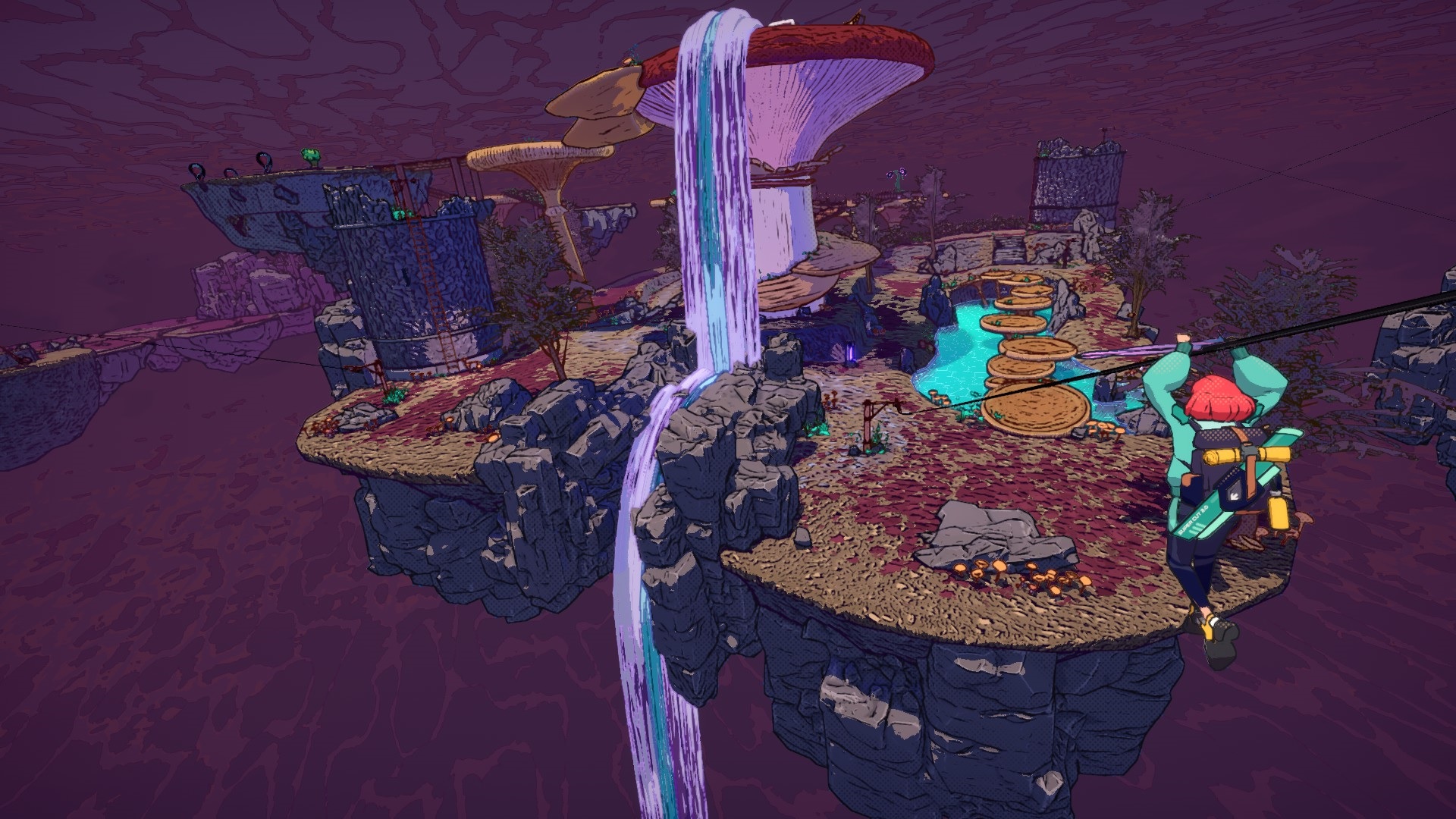
Gear can be looted or purchased and sold, though the systems for doing this are a bit clunky, as you're given an overall rating for your gear score that isn't really explained well outside of roughly correlating to a higher number. You also aren't given any warnings if you sell a sword you've placed special upgrades in, so be careful!
When you're not killing, you're solving puzzles, and it's here that Dungeons of Hinterberg really lets loose. Early on you'll be faced with simple, physics-based problems, like needing to drop a counterweight or pull down some items in the correct order. As time goes on, these get wilder and wilder, with more complicated patterns as the environment quite literally spins around you. Things never got too far out of hand though, and only a handful of puzzles truly stumped me for more than a couple of minutes.
Naturally, many of these puzzles are built around the regional magic systems, meaning what you'll find in one area is completely unlike anywhere else in the game. It provides a nice change of pace from time to time, and kept things from ever getting repetitive across the roughly 18 to 20 hours I played.
I did run into some bugs while playing. A couple of times I got stuck on geometry, unable to move or escape. This was solved by reloading a save, and the game's autosave feature (as well as multiple available save slots) means I never lost a lot of progress.
More annoying is the "jump" feature, or rather, the way Luisa jumps. There's no dedicated jump button, but instead, Luisa will contextually jump from one object to another in certain circumstances. In theory, this makes a lot of sense. In practice, it means she'll leap off into the abyss when you're just trying to line up the correct angle to use a magic ability. It happened frequently, and I easily died 20 times as much from Luisa's sudden leaps as a I did to a stray magic bolt from a goopy monster.
Dungeons of Hinterberg: Visuals and performance
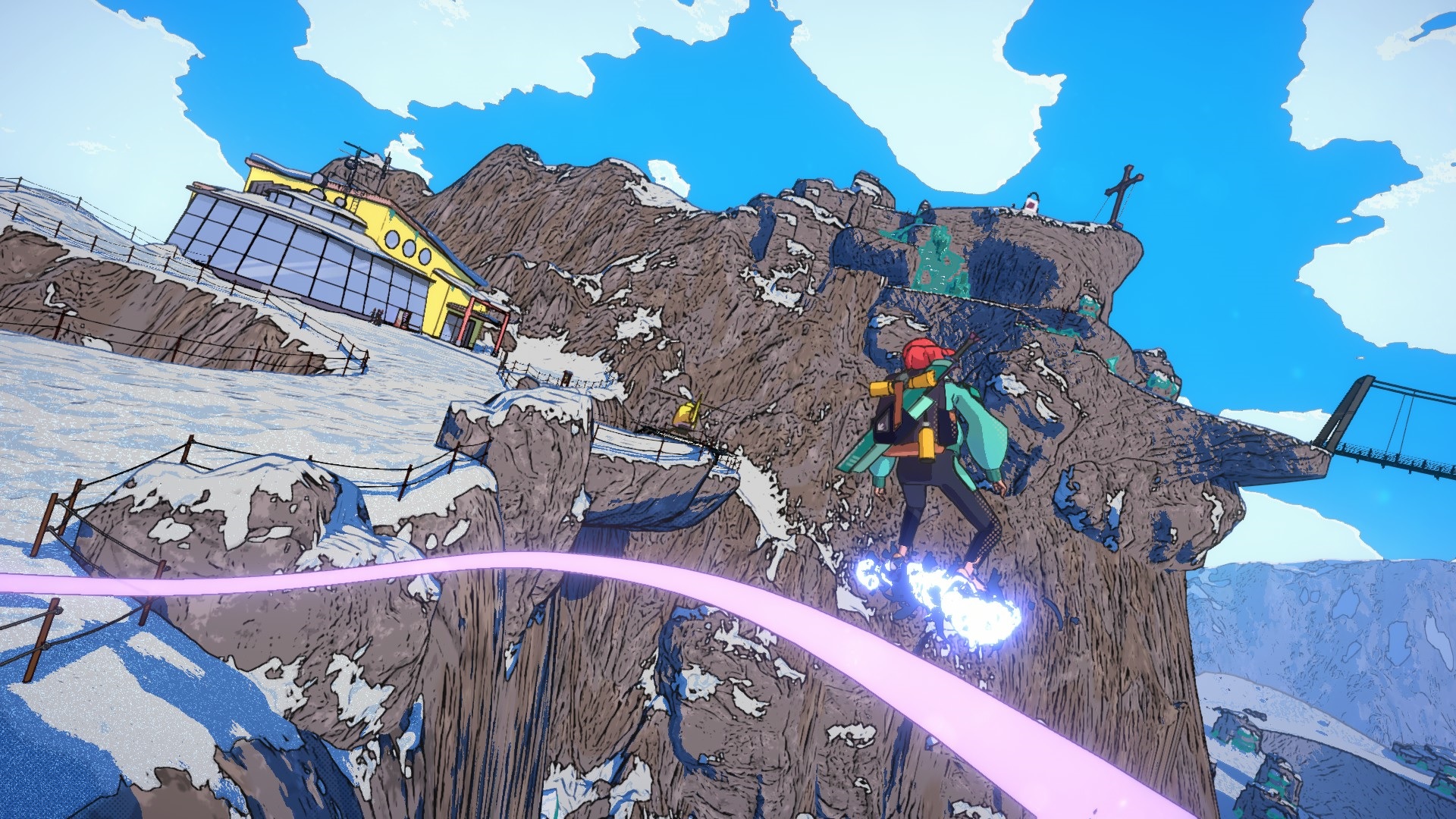
The simple art direction of Dungeons of Hinterberg is somewhat deceptively simple, appearing at first glance to be rather plain, only to reveal some gorgeous environments in a magic-immersed Alpine mountain setting. Different regions look vastly divergent but visually cohesive, with warm autumnal tones in a forest giving way to a poisonous green swamp.
Meanwhile, the friendly but simple town of Hinterberg itself provides a mundane place of rest before you return to magical snow-capped peaks and icy caves. There's a wonderful amount of variety, even within the dungeons of a particular region. It is a little odd watching unnamed NPCs fade into being and out of existence around you, but after a while I got used to it, and it seemed to be a unique way of showing the bustle of constant unknowable faces in a strange town.
With an NVME SSD and RTX 3070, I had no issues running Dungeons of Hinterberg at the highest possible settings and a constant, smooth 60 FPS. There's a range of options for reducing the visual quality if you do encounter any drops, though despite the game's simple appearance, an SSD is highly recommended, reducing the loading times to essentially nothing and making fast travel instantaneous.
Dungeons of Hinterberg: Accessibility and approachability
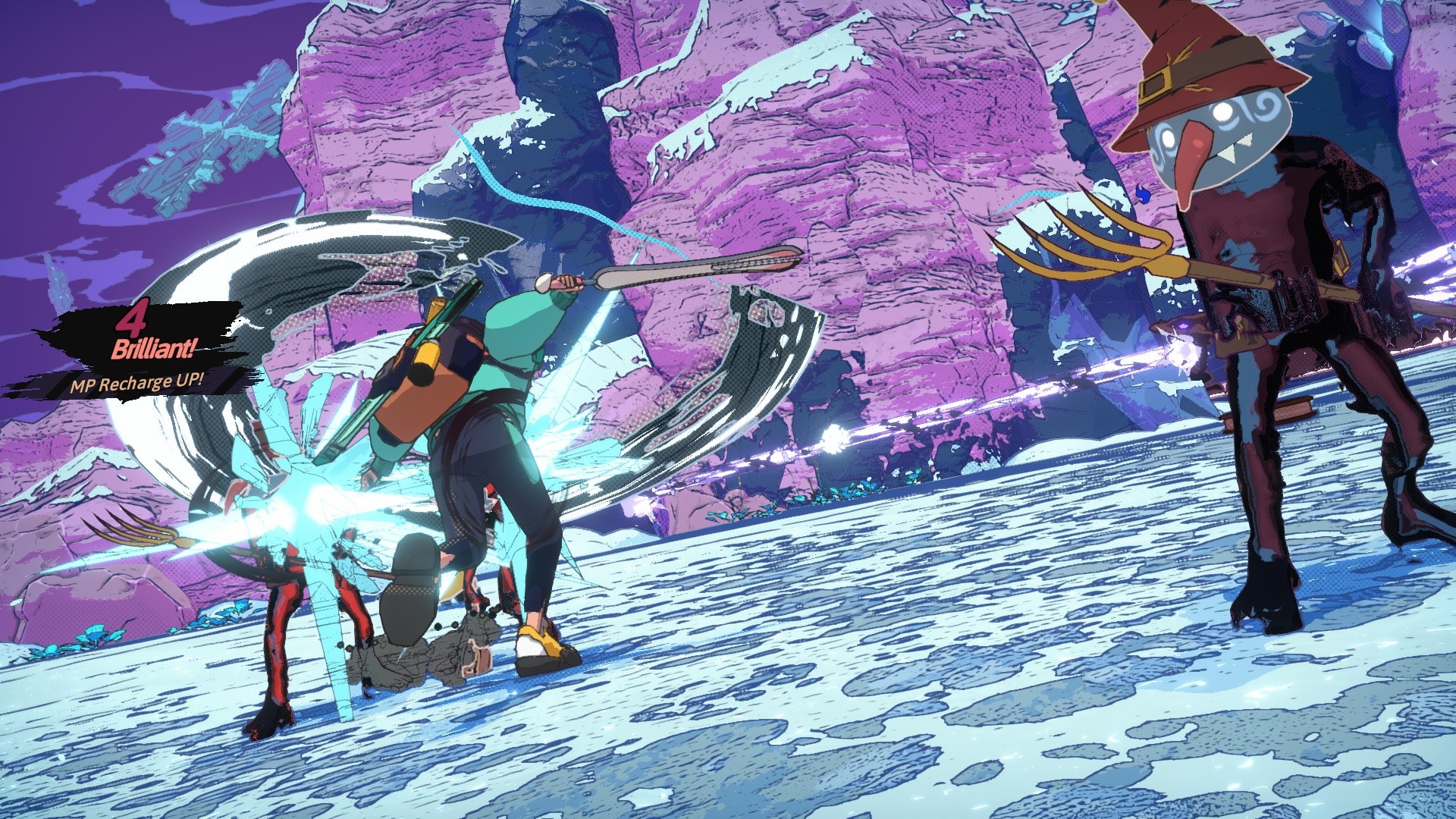
Dungeons of Hinterberg has a handful of accessibility options to aid players if they get stuck. In addition to difficulty settings (I played on normal) the biggest feature by far is the ability to turn on invulnerability. With it, Luisa simply can't fall below 1HP, meaning that if you somehow manage to end up in a situation where you're unable to win a brutally tough fight, you have a way to get through.
You've also got some options for changing camera sensitivity, removing some screenshaking that could be jarring for some people, especially if they suffer from serious motion sickness. It's not the most comprehensive suite of options I've ever seen in a game, but it should be enough to help most people get through.
Dungeons of Hinterberg: Final thoughts
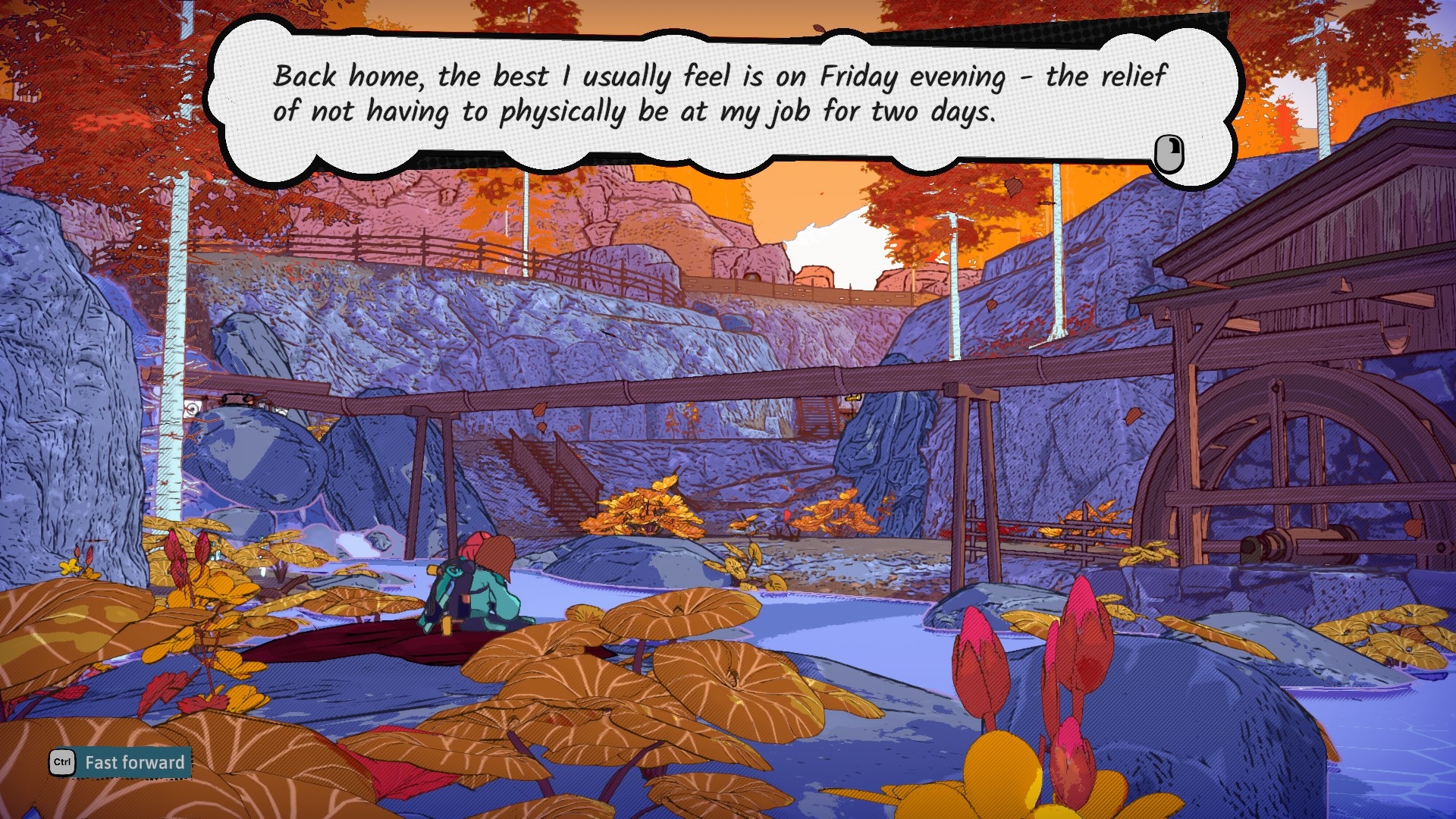
Overall, Dungeons of Hinterberg is a game that attempts to push back on the boundaries of genre, with a smorgasbord of gameplay elements that weave together in a mostly-smooth magical adventure. It's usually enjoyable, and there's secrets around every corner to discover, while the game's size means it doesn't really overstay its welcome.
Luisa's burnout and struggle to find somewhere she could get away from it all spoke strongly to me at this point in my life, even if her ability to forge fast friendships at such speed is another magical power. I really enjoyed what the team at Microbird Games has created, and I'm looking forward to their future work, whether it somehow takes place in this setting or somewhere else.
Bits and pieces of the experience could certainly be more polished, and you'll frequently find yourself having to change plans for the day in slightly irritating ways out of necessity, not because it's what you wanted to do. That's worth criticizing, but that means it's the most accurate vacation simulator I've ever seen.
Dungeons of Hinterberg is currently available on Xbox Series X|S consoles and Windows PC via Steam. It's also available in Xbox Game Pass.
Can I play Dungeons of Hinterberg on Xbox Game Pass?
Yes, Dungeons of Hinterberg is available day one through Xbox Game Pass. Any subscriber can download and play the game without having to buy it.
Can I play Dungeons of Hinterberg on Steam Deck and gaming handhelds?
Dungeons of Hinterberg is rated as Steam Deck compatible by Valve. While I haven't personally been able to test it yet, given the PC requirements for the game, there's no reason to believe that it wouldn't play well on a Steam Deck or any other gaming handhelds like the ROG Ally.
!["[T]he First and Fifth Amendments Require ICE to Provide Information About the Whereabouts of a Detained Person"](https://images.inkl.com/s3/publisher/cover/212/reason-cover.png?w=600)






